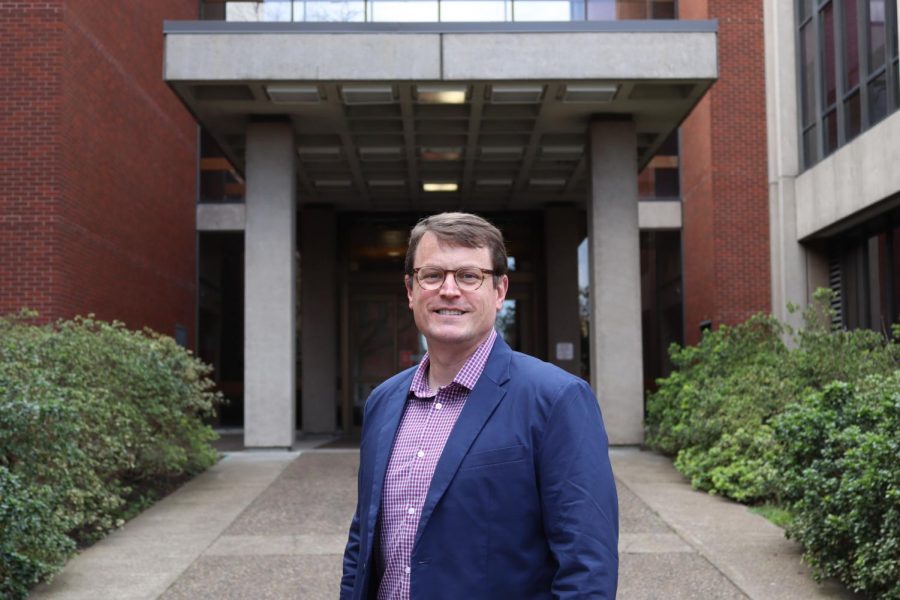OSU receives increased financial aid funding for 2022-23 academic year
Oregon State University Director of Financial Aid Keith Raab can be seen in front of Kerr Administrative building on OSU’s Corvallis, Ore. campus .With the cost of tuition continuing to balloon over the years, the Office of Financial Aid is working to increase financial aid for prospective students.
January 3, 2022
Oregon State University’s financial aid experts urge students to submit their Free Applications for Federal Student Aid as soon as possible in order to receive need-based financial aid and scholarships.
Throughout the 2022-23 academic year, the university’s financial aid office will see an increase in available aid for current and incoming OSU students.
Director of Financial Aid Keith Raab said he shares the responsibility of handling all federal and state aid that OSU students are able to receive at any level as well as some of the institutional aid funds the university is gifted.
Raab said their department has been handling approximately $260 million in aid over the last couple of years.
Raab said working closely with campus leadership and partners across campus all year to ensure OSU stays affordable to those in need is a high priority for all staff members involved in the process of gaining access to funding.
“It is part of our goal and our mission to be affordable to a wide range and diverse range of students and families, and one of the ways we do this is through financial aid, grants and scholarships,” Raab said. “We hope by increasing these funds it will enable even more students to have access to OSU.”
Raab said his team hopes increased funds will help students make the decision to attend OSU more easily, as well as allow them to participate in more activities outside the classroom without having to worry about working a part-time job or earning money.
“All of those things are incredibly valuable to students, and we hope that by providing more funding, students can be more focused on their academics among other things… so that is also why we increased that budget,” Raab said.
Raab encourages students to fill out their FAFSA application immediately for the current academic year as well as next year.
“Many scholarships at OSU have a financial need component to them, and that financial need is determined by doing the FAFSA,” Raab said. “So, by doing the FAFSA, you’re not only applying for national and state aid but you’re also helping make yourself more eligible for institutional scholarships.”
OSU University Relations and Marketing Vice President Steve Clark said the university expanded available financial assistance to help more students with different needs and experiences enjoy their educational experience at OSU.
“I encourage students to reach out to the Financial Aid Office for more information about how we might be able to assist them,” Clark said.
Jon Boeckenstedt, OSU’s vice provost of enrollment management, said after years of working within the university, he knows cost is the biggest barrier for students earning a college degree or enrolling in the first place.
“Almost all [funds] will be made available to students who have financial need,” Boeckenstedt said. “In the past, we have done our best to bridge the gap between what the federal form said a student could pay and what our costs were, but sometimes we realize that still isn’t enough.”
Boeckenstedt said it is becoming increasingly difficult for low-income people in Oregon to obtain a degree and that students are already struggling to make ends meet and afford to come to OSU in the first place.
According to Boeckenstedt, he hopes the extra funds will increase access for students who want to come to OSU and graduate on time.
“We recognize and realize a lot of families were hit hard by COVID-19 and that the families that were hit the hardest by it were likely families with the most financial need,” Boeckenstedt said.
























































































































